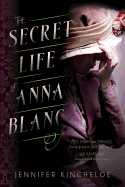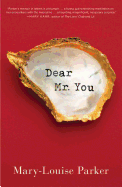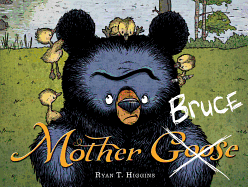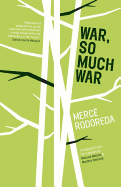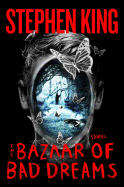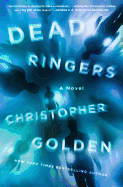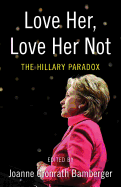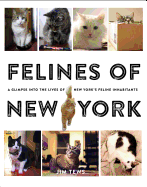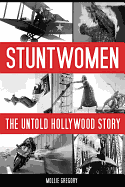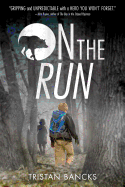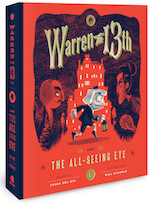Tuesday, November 24, 2015
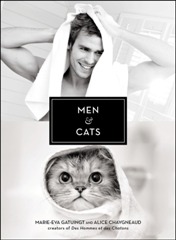 Cats now outnumber dogs in U.S. households, so we'd like to point out five new books, purr-fect gifts for any feline fancier. Men & Cats (Perigee Books, $15) is for those who love to watch Sex and the City with their animal companions. This trim hardcover expands on Marie-Eva Gatuingt and Alice Chaygneaud's popular blog Des Hommes et des Chatons, with b&w photos of cats juxtaposed on the opposite page with scantily clad hunks in the same pose. It's hard to choose which side to cuddle with first. Wildlife photographer Mitsuaki Iwago's oversized hardcover Cats & Lions (Chronicle, $24.95) has a similar layout, with contrasting images of domestic cats opposite lions in the wild.
Cats now outnumber dogs in U.S. households, so we'd like to point out five new books, purr-fect gifts for any feline fancier. Men & Cats (Perigee Books, $15) is for those who love to watch Sex and the City with their animal companions. This trim hardcover expands on Marie-Eva Gatuingt and Alice Chaygneaud's popular blog Des Hommes et des Chatons, with b&w photos of cats juxtaposed on the opposite page with scantily clad hunks in the same pose. It's hard to choose which side to cuddle with first. Wildlife photographer Mitsuaki Iwago's oversized hardcover Cats & Lions (Chronicle, $24.95) has a similar layout, with contrasting images of domestic cats opposite lions in the wild.
Cat lovers outside the Big Apple can still delight in Felines of New York (Simon & Schuster, $14.95) by comedian Jim Tews, who has photographed and "interviewed" more than 100 New York kitties. (In fact, we like it so much we've reviewed it below.) One cat boasts about creating a new hook-up app for cats called Littr. Another says his biggest regret was "Not hiding better when I saw you walk in." Shake Cats (Harper Design, $17.99) is photographer and animal trainer Carli Davidson's follow-up to her successful Shake Dogs and Shake Puppies, where she captures more than 130 hilarious images of cats shaking their heads.
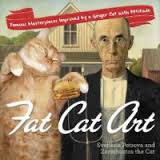 In Fat Cat Art: Famous Masterpieces Improved by a Ginger Cat with Attitude (Tarcher, $14.95), Russian artist Svetlana Petrova inserts her 22-pound cat, Zarathustra, into classic pieces of art. Amazingly, this is not done through Photoshop. Petrova impressively repaints and adds Zarathustra to more than 130 works of art, ranging from Botticelli and da Vinci to Hopper and Dali. Zarathustra offers pithy and illuminating background notes about each painting. --Kevin Howell, independent reviewer and marketing consultant
In Fat Cat Art: Famous Masterpieces Improved by a Ginger Cat with Attitude (Tarcher, $14.95), Russian artist Svetlana Petrova inserts her 22-pound cat, Zarathustra, into classic pieces of art. Amazingly, this is not done through Photoshop. Petrova impressively repaints and adds Zarathustra to more than 130 works of art, ranging from Botticelli and da Vinci to Hopper and Dali. Zarathustra offers pithy and illuminating background notes about each painting. --Kevin Howell, independent reviewer and marketing consultant
Writers
by Barry Gifford
The prolific and versatile Barry Gifford (Wild at Heart; The Lost Highway) has a little fun with a range of literary figures in Writers, a collection of dramatic scenes "intended to be read as stories as well as performed as plays." Gifford begins with "Spring Training at the Finca Vigía," in which Hemingway showcases his famous bluster and paranoia while hosting two Brooklyn Dodgers at his Cuban home; Martha Gellhorn also makes an appearance in this longest of Gifford's imaginings. Most run around 10 pages in length, and are short and pithy.
The settings range from "relatively realistic" to "wholly imaginary," Gifford warns, and include a conversation between the living Roberto Bolaño and the ghost of Jorge Luis Borges. Arthur Rimbaud tells his sister on his deathbed, "I have been bitten by life before and survived." Marcel Proust's final words are likewise recorded. Herman Melville laments the public's reaction to Moby-Dick to a passing policeman, who worries that he is suicidal. Emily Dickinson questions her sister: "Why? I'm nobody. Who are you? Aren't you nobody, too?"; James Joyce and Samuel Beckett exchange silences. Joining these cameos are Kerouac (with characteristic openness and affinity for drink), Albert Camus, Nelson Algren, Jane Bowles, Baudelaire and others.
Gifford's imagined anecdotes occasionally reference the absurd, but overall tend to confirm readers' impressions of large and troubled personalities. These famous artists appear surreal and often ugly, but by caricaturing them he also reasserts their humanity. The result is both entertaining and thought provoking. --Julia Jenkins, librarian and blogger at pagesofjulia
Discover: Barry Gifford's brief fictional scenes of celebrated authors are funny, tragic and insightful.
Because She Never Asked
by Enrique Vila-Matas, transl. by Valerie Miles
Enrique Vila-Matas (Illogic of Kassel; Dublinesque) experiments with form and his reader's trust in Because She Never Asked, a novella about the circularity of art and life.
This twisting story is told in three parts. In the first, a young artist, Rita Malú, lives in Paris and obsesses over another artist, Sophie Calle. Rita "carrie[s] out a series of experiments with truth"; in one of these, she embarks on a journey to Portugal to search for an author she does not really want to find. In the second part, a narrator reveals that he has written Part 1 at Sophie's request, as a work of art that she will then live out as written. Part 3 questions again what has come before it. This convoluted structure, almost a story told in reverse, discloses details and layers of artifice as the reader proceeds. At least two subtly distinct voices demand attention and credibility.
Valerie Miles's translation from the Spanish preserves a roguish tone that feels apt in this playful and puzzling novel, whose brevity--under 100 pages--belies its complexity. The narrator labors with questions about the reality of life, its relationship to art and their relative worth. He invokes the dreaminess of Don Quixote and the inscrutability of Marcel Duchamp, and when he becomes frustrated in explaining the jealousy of lovers, commands his reader to "read Proust to understand it better." Vila-Matas's novella is about something different by its end than at its beginning: a carefully packaged riddle, intriguing and stylish. --Julia Jenkins, librarian and blogger at pagesofjulia
Discover: This enigmatic novella in translation asks if life imitates art or vice versa.
War, So Much War
by Mercé Rodoreda, transl. by Maruxa Relaño and Martha Tennent
War, So Much War was the last of Mercé Rodoreda's novels published in her lifetime, shortly before her death in 1983. Unlike the intense psychological realism of The Time of the Doves, this newly translated capstone to her writing career chronicles the picaresque adventures of a 15-year-old boy, Adrià Guinart. He hurtles with youthful energy from one encounter to another in a surreal landscape of perpetual war. Though no specific country or battle is ever named, he seems to be making his way through the horrors of the Spanish Civil War, which the author herself survived.
Rodoreda's literary technique is to keep actual combat offstage. She depicts men rushing into battle. She depicts glassy-eyed survivors emerging from battle. Throughout War's 43 episodes, some linked, some with recurring characters, Rodoreda compiles one testimony after another from the people Adrià encounters in his wanderings. Her descriptions are spare. Most characters are unnamed. The and-then-and-then plot races forward like a Bildungsroman on speed, as one character after another imparts to Adrià their advice for survival.
Rodoreda can be a compelling writer, dropping occasional jewels like "those who allow their souls to be populated by terror see things that do not exist." And her images are unforgettable. Her prose is frequently more poetry than narrative, more surreal visions than storytelling, but for all that it has the fascination of a trek across an infernal Hieronymus Bosch landscape, far-fetched enough to be artistic, realistic enough to be painfully true. --Nick DiMartino, Nick's Picks, University Book Store, Seattle, Wash.
Discover: The last published novel of the Catalan writer Mercé Rodoreda follows a 15-year-old--and his surreal encounters--across a war-torn Spanish landscape.
Mystery & Thriller
The Secret Life of Anna Blanc
by Jennifer Kincheloe
When, in 1907, a smart, sheltered socialite schemes her way into the gritty world of the Los Angeles Police Department, the result is a humorously delightful historical mystery.
Anna Blanc is determined to free herself from the smothering rules of her bank executive father. No beau is good enough for Christopher Blanc, and he insists a chaperone be with Anna wherever she goes, ensuring she doesn't do anything to tarnish her reputation. Anna wants out from under this tyranny. She wants to right wrongs like the characters in the novels she reads covertly. So when an opening for a police matron with the LAPD is advertised in the newspaper, Anna resorts to bribing her unscrupulous guardian and adopts the alias Anna Holmes in order to fulfill her dream.
Anna learns quickly that her fictional stories are nothing like actual police work. She's utterly unprepared for the realities of her new job; nonetheless, she's determined to find a rapist and stop a murderer. But to do this she must keep both of her worlds separate. When they ultimately collide, the result is catastrophic.
Jennifer Kincheloe has astutely balanced Anna's intelligence with her ignorance as an outsider. Her privileged upbringing and society's stringent mores leave her naïve to "street sense" and prone to hilarious mishaps and awkward interactions. Instead of coming across as a bumbling idiot, though, Anna's logic and reason make her endearing and admirable. Her moxie leaves the reader cheering through tears of laughter.
It doesn't require Sherlock to deduce that this suspenseful, smart and funny book is a crack debut. --Jen Forbus of Jen's Book Thoughts
Discover: A strong-willed society woman finds herself in a different world when she pursues her dream of being a detective.
The Bazaar of Bad Dreams: Stories
by Stephen King
Stephen King is arguably the most influential American writer of the late 20th century. No other author has both his readership and the clear impact on writers (both "literary" and "genre") that have come after him. Few readers haven't cracked open at least one of his many, many novels since his debut in the 1970s. But while we praise him for his longer works (especially the first six books or so), he's also a crackerjack teller of short stories.
The Bazaar of Bad Dreams is King's sixth story collection (he's prolific in any medium he chooses), and while none of the tales reach the dramatic heights of The Stand or Salem's Lot, fans of the author's work will find everything they love about the man and more inside.
The first story might be the best. "Mile 81" pits a 13-year-old against a monstrous car that eats unsuspecting adults. King's prose is perfectly poised here, never delving into melodrama but underscoring the terror of children left with little hope. King has always been good at creating monsters, but "Mile 81" is a reminder that usually his supernatural entities are simply vessels to discuss the real pain of loss. The last story, "Summer Thunder," which takes place at the end of the world, tries to deal with that pain on a larger scale, but doesn't quite land it. Still, King knows how to push his reader's buttons, and he does so marvelously throughout The Bazaar of Bad Dreams. --Noah Cruickshank, marketing manager, Open Books, Chicago, Ill.
Discover: Stephen King once again delivers a chilling collection of short stories to read with all the lights on.
Science Fiction & Fantasy
Dead Ringers
by Christopher Golden
Tess Devlin is furious when her ex-husband, Nick, ignores her on a busy Boston street and walks away. When she calls him on his cell phone, he says he's in New Hampshire and doesn't know what she's talking about.
Failed journalist and successful alcoholic Frank Lindbergh lives in his childhood home now that both his parents are dead. When a man with his face chains him up in the basement in order to take over his life, Frank realizes that he's not quite as done with living as he'd thought.
Tess, Nick and Frank had met during an investigation of a haunted house and demonic summoning ritual. A visit to the house, as well as the mysterious mirrored cabinet from it that appears in a nearby hotel, has the three suddenly confronted with their individual evil twins. They must work together to figure out what is going on and how to stop it.
Dead Ringers explores the horror of confronting one's (very literal) demons. Tess's best friend Lili's double has taken up residence nearby as a successful artist; Frank's double gets his dream job and starts wearing better suits. Each copy has created a better life, forcing the originals to realize their missed opportunities.
Dead Ringers rises above the standard horror-novel clichés with style. Author Christopher Golden (Snowblind) keeps the mysteries coming and the characters solid and believable, even when they begin to fade away under the evil influence of their own replacements. --Rob LeFebvre, freelance writer and editor
Discover: A supernatural horror novel that seems all too plausible thanks to its fast pace, adept characterization and fine sense of place.
Biography & Memoir
Dear Mr. You
by Mary-Louise Parker
In her inventive, unconventional memoir, Dear Mr. You, actress Mary-Louise Parker offers glimpses into her life via 34 letters written to and about significant men in her life, showing how masculine presences--fleeting, long-term and imagined--have influenced her, for better or worse.
The letters range widely in subject, form and tone. Most pay homage to family, as in "Dear Grandpa," which tells the story of Parker's grandfather and a creative act of love he undertook to brighten a son's dark days during World War II. In "Dear Daddy," Parker writes longingly of her father, his war experiences and how an injury sustained in battle changed his life--and Parker's.
Other letters are odes to--or denunciations of--lost loves, sexual exploits and long-ago intimacies. Tenderness and sensitivity gravitate to the fore in a letter about Parker's short-lived friendship with a man battling cancer. She writes an affectionate portrait about the two-way street of friendship, and humbly recalls meeting the biological uncle of her adopted, Ethiopian-born daughter. In "Dear Future Man Who Loves My Daughter," Parker admiringly glances back at the protectiveness of her own brothers when she was growing up. The men at the center of each letter often serve as mirrors, reflecting much about Parker and those who populate her world.
Whether writing to NASA, poets, musicians, a goat facing castration, an ash-covered firefighter on 9/11 or doctors, Parker's prose is infused with a perfect balance of sarcasm, humor and poetic language. Her letters shine with candid, self-aware depth--unabashed in revealing the truth of her own nature and experiences. --Kathleen Gerard, blogger at Reading Between the Lines
Discover: Award-winning actress Mary-Louise Parker chronicles her life by writing letters to men who have influenced her.
Political Science
Love Her, Love Her Not: The Hillary Paradox
by Joanne Conrath Bamberger, editor
After nearly 30 years in the public eye as attorney, politician, diplomat and power spouse, Hillary Clinton has an ability to incite powerful reactions and inspire opinions equaled by few Americans today. With the 2016 Presidential election still a year away and her campaign for the Democratic Party nomination already running at full throttle, the conversation surrounding her is more intense than ever, and the essay collection Love Her, Love Her Not: The Hillary Paradox joins it from a variety of perspectives.
Edited by Joanne C. Bamberger, founder of the online magazine The Broad Side, Love Her, Love Her Not presents 28 reflections and opinions on Clinton. Bamberger notes that women's votes have decided nearly all of the presidential elections of the last three decades, and in accordance with that and her mission to advance political commentary by and among women, all of the book's contributors are women, representing many ages, cultural backgrounds and political beliefs.
Some essayists are supportive, some are critical. Some are objective and analytical, while others are unabashedly personal. Several of the writers ponder the conflict between wanting to support a woman for president and disagreeing with aspects of this particular woman's record, giving the lie to the assumption that women will vote for a woman just because she is one. Love Her, Love Her Not is not a portrait of the candidate, but it presents an enlightening picture of her effect on the electorate; while no consensus emerges, it's a valuable contribution to the conversation that will surely occupy the months ahead. --Florinda Pendley Vasquez, blogger at The 3 R's Blog: Reading, 'Riting, and Randomness
Discover: In this timely essay collection, 28 women express a range of opinions about presidential candidate Hillary Clinton.
Humor
Felines of New York: A Glimpse into the Lives of New York's Feline Inhabitants
by Jim Tews
Stereotypes often smack of essential truths: New Yorkers are saucy; cats are our superior, opinionated overlords. Jim Tews's Felines of New York fuses both notions into a collection of humorously captioned photographs that span the city's boroughs and feline kind's myriad purr-sonality traits.
From Astoria to Ridgewood, SoHo to Park Slope, these furry models are as disparate as their neighborhoods' identities. Tews wisely channels each microcosm's quirks in the "quotes" he attaches to every subject. Benny, a chubby tabby squinting in Morningside Heights sunlight, notes, "I've been taking classes at Columbia." In Staten Island, a colony of street-dwellers crouches beneath cars, meowing that the neighbor who's feeding them "doesn't realize that's where we've been plotting our takeover." Tews replies "Your takeover?" Name Withheld responds, "I've said too much."
From the political (striped Toby's take on gentrification, voiced from his Midtown cat tower) to the sociological (Toe, a coal-black Chinatown resident, who believes that she can manifest food through positive thoughts), Felines mirrors its inspiration, the popular blog and book series Humans of New York. Both depict a city whose defining characteristic is its individuals, the dreamers who flock to the Big Apple because it allows them to be themselves.
Any owner or lover of kitties will see their feistiness and oddity within these pages. When they're not making "found-object sculptures... with socks, feathers, and dust bunnies" (Bea, West Village), they're crawling into Bloomingdale's bags, wrestling with shoelaces and acting neurotic. In other words, Tews demonstrates that New York's kitties are just as weird and winsome as its multifaceted neighborhoods. --Linnie Greene, freelance writer
Discover: Felines of New York pairs photographs of cats in their urban habitats with quips that channel the popular Humans of New York series.
Performing Arts
Stuntwomen: The Untold Hollywood Story
by Mollie Gregory
Beginning with the silent film era and continuing into the present day, documentary filmmaker and author Mollie Gregory writes an in-depth account of the stuntwomen who have performed on the big screen and television. "Their arena is one that few know--a community of gifted athletes whose work makes movies thrilling. Like all stunt performers, stuntwomen risk injury or even death, but over the years, they have also faced institutional discrimination, unequal pay, and sexual harassment." Gregory explores these subjects and more, using interviews with the stuntwomen and -men, the actresses they doubled, and others involved in making movies and television, to give readers a close view of the exciting and dangerous world these women love to face on a daily basis.
Before World War I, women were frequently used as stunt performers, but as the movie industry boomed and society urged women back into the home, short-statured men in wigs and dresses soon took their places. Then, as the feminist and Civil Rights movements gained traction, women and African Americans suddenly found new roles to play on the big screen. The advent of television shows like Charlie's Angels and Wonder Woman also helped provide jobs for these daredevil performers. Gregory discusses the use of illegal drugs by movie personnel, which created increasingly dangerous situations for the stunt performers, the horrifying and sometimes life-shattering accidents some suffered when a stunt when wrong, and the future role for stunt performers now that computer-generated imagery is available in place of real people. --Lee E. Cart, freelance writer and book reviewer
Discover: Filmmaker and author Mollie Gregory offers a behind-the-scenes look at the role stuntwomen have played in the movies and on television.
Children's & Young Adult
Mother Bruce
by Ryan T. Higgins
Mother Goose--rather, Mother Bruce--is the laugh-out-loud funny story of a grouchy bear who reluctantly becomes the guardian of four goslings, when all he wanted to do was eat them.
"Bruce was a bear who lived all by himself. He was a grump." Bruce doesn't like sunny days, rain or even cute little animals. The one thing he does like is eggs and, after stealing them from various birds, he cooks them into fancy recipes such as "hard-boiled goose eggs drizzled with honey-salmon sauce." The ingredients for this dish are fairly easy to procure. Heading out into the wilds with his shopping cart, Bruce catches a few salmon, collects honey from a local beehive (supporting local business) and grabs Mrs. Goose by the neck to inquire if her eggs are "free-range organic." Back at home, Bruce prepares to hard-boil the eggs on the wood stove. But when he goes out to fetch kindling, he returns to an "unwelcome surprise." The four eggs on the stove have hatched into goslings, and they are all crying "MAMA!" In Ryan T. Higgins's extraordinary illustrations, the dark purple bear with his perpetually furrowed brow contrasts delightfully with the cute yellow goslings who crawl and tumble all over him. As the geese grow up and show no signs of migrating, they all bus to Miami for the winter, and in the end, a baby sea turtle hatches on the sand and inches up to one of the geese. "Mama?"
Mother Bruce never cracks a smile as he dutifully raises his new family, but young readers won't be able to hold back. --Karin Snelson, children's and YA editor, Shelf Awareness
Discover: Mother Bruce, not Mother Goose, is a bear who reluctantly raises four goslings in this hilarious picture book with a nod to foodies great and small.
On the Run
by Tristan Bancks
Twelve-year-old Ben Silver, his seven-year-old sister, Olive, and their parents have never been a "family-movie-night, camp-in-the-backyard, let's-discuss-this-and-get-everyone's-opinion" kind of family. So when Ben's parents screech into the driveway one day and announce they're all going on a vacation--now, this minute--Ben is dubious. But he wants to believe his mother when she tells him that getting haircuts and new clothes and holing up in a filthy cabin in the Australian bush are just "what you do" on vacation.
Ben, whose main interests until now have been making stop-motion movies while eating microwaved doughnuts, takes longer than one might expect to wake up to the scary reality of his situation: his parents are on the run from the law. Ben's typical-preteen questions about his own identity--will he grow up to be like his dad?--take a dark turn when it becomes clear that what he might inherit are criminal inclinations. But Ben is truly put to the test when the big duffel bag of cash his parents accidentally acquired (but intentionally are keeping) falls into his own hands. He and Olive are suddenly on the run themselves, whether from the police or their own parents, it's hard to say in the heat of the moment. Soon he's fighting to stay alive in the wilderness, and his battered paperback copy of My Side of the Mountain is no help at all.
In On the Run, a dramatic page-turner by Australian actor-turned-writer Tristan Bancks (Mac Slater series), young readers will find both action and psychological thrills as Ben comes of age abruptly and irrevocably. --Emilie Coulter, freelance writer and editor
Discover: A 12-year-old Australian boy is forced by his parents' criminal actions into perilous adventure and profound soul-searching.
Warren the 13th and the All-Seeing Eye
by Tania Del Rio, illus. by Will Staehle
Twelve-year-old Warren, a cheerful, toad-faced boy, is the 13th Warren in a long line of Warrens, all historically devoted to the prosperity of the eight-story, 113-room Warren Hotel, "perched miserably on a hill in a bleak gray countryside," haunted house-style.
Sadly, Warren the 12th, Warren's father, passed away five years ago, and when his supremely lazy Uncle Rupert took over, the Victorian hotel fell to ruin. So everyone is shocked when a guest arrives in an elegant automobile, tall and thin, all in black, face wrapped in gauze bandages. The mysterious stranger doesn't speak, but communicates in cryptic cards with pictures of four-poster beds and large red Xs. Young Warren, as the "sole bellhop, handyman, exterminator, room-service valet, and all-around errand boy," must kick into action to accommodate the unusual guest. He's on his own because Uncle Rupert is, as established, lazy, and his beastly new wife, Annaconda, spends all her time creeping about as a spy or frantically destroying the hotel in search of the possibly valuable, possibly nonexistent treasure, the "All-Seeing Eye."
Warren doesn't mind hard work ("Warren the 12th always used to say that hard work built character"), but it's a lonely life, so lonely that he often talks to his late father's portrait, which hangs in the third-floor Hall of Ancestors. His only real friends are the cook and "last of the family's old employees," Chef Bunion, and his private tutor, Mr. Friggs, an elderly scholar and permanent hotel guest who lives in the library. Despite Aunt Annaconda's orders that her nephew be served only porridge, Chef Bunion sneaks the boy delectable beef goulash and chocolate pudding cookies. And Mr. Friggs is always good for a story or two. Alas, Warren's loneliness makes him vulnerable. So when Aunt Annaconda (not just witchy but an actual witch, as it turns out) brings in a 12-year-old apprentice named Petula to shadow Warren's every move, pretend to befriend him and extract possible information about the possible All-Seeing Eye, the hapless fellow falls for it, hook, line and sinker.
Warren is a good-natured, industrious boy, and it is his refreshingly stoic disposition that is the engine of this splendidly madcap story. He always makes the best of things. When Aunt Annaconda sends him into the haunted, thorn-choked hedge maze as punishment for eating Chef Bunion's goulash, he is secretly delighted because he loves it in there. When she banishes him to the "shadowy, dank, claustrophobic" boiler room for losing a 300-year-old leather diary he found in the hedge maze, he is thrilled to meet an eight-tentacled, purple-tongued monster he names "Sketchy" because it wanted to have its likeness sketched. And when Warren discovers the All-Seeing Eye may really exist and stumbles upon a riddle in that old journal he found, he knows he owes it to the 12 Warrens before him to keep it out of his abominable Aunt Annaconda's greedy clutches.
The hotel goes haywire when Aunt Annaconda recruits her two sisters, Isosceles and Scalene, to complete her coven triangle and find the All-Seeing Eye. Unfortunately, the sisters didn't know it was supposed to be a secret and it isn't long before "hunters and explorers, performers and artists, conmen and scholars and commoners and aristocrats" arrive at the Warren Hotel in droves, all with their own fanciful notion of what the All-Seeing Eye might be. And they proceed to rip up the hotel looking for their imagined prize: "Beds were not only unmade but entirely dismantled. Wardrobes were overturned, nightstands upended.... Bathtubs had been shoved into bedrooms so that guests could peer down drainpipes."
All the delicious chaos of Warren the 13th and the All-Seeing Eye--first of a planned series--is wonderfully cloaked in a Victorian sensibility and design, a bit of Edward Gorey, a bit of Tim Burton. The table of contents ("ENJOY THE RIDE, RIGHT THIS WAY") points to the chapter titles, with intriguing names such as "In Which a Mysterious Guest Arrives" and "In Which Warren Is Drowned [Almost]." Chapters open with big, bold spreads inviting the reader into the atrocities ahead, and the two-column pages burst with spot illustrations in two colors, red and black. Will Staehle's artwork is a collage of actual old engravings, superimposed with more cartoonish figures. Dialogue is highlighted in red when yelled, secret codes and puzzles abound, and there's even a letter that readers will have to hold up to a mirror to decode.
The central riddle of the book hints there will be a time when "The hotel shall no longer stand," and that dire prediction seems to be coming true, as Warren sees his beloved hotel torn to pieces. Despite all the uncertainty--Will the hotel stand or fall? Is there really an All-Seeing Eye? Is Petula truly Warren's friend? Will Rupert always be lazy? Who is that mysterious bandaged guest?--one thing is sure: readers will enjoy finding out. Author Tania del Rio, best known for her work writing and drawing the 42-issue run of Sabrina the Teenage Witch, captures Warren's indomitable spirit--and the madness that surrounds him--in a lucid, witty style that keeps the pages flying.
No amount of care was spared in this truly charming, wonderfully spun middle-grade adventure, rich with details that, when spotted, are as delightful as finding a secret passageway in an old house. --Karin Snelson


